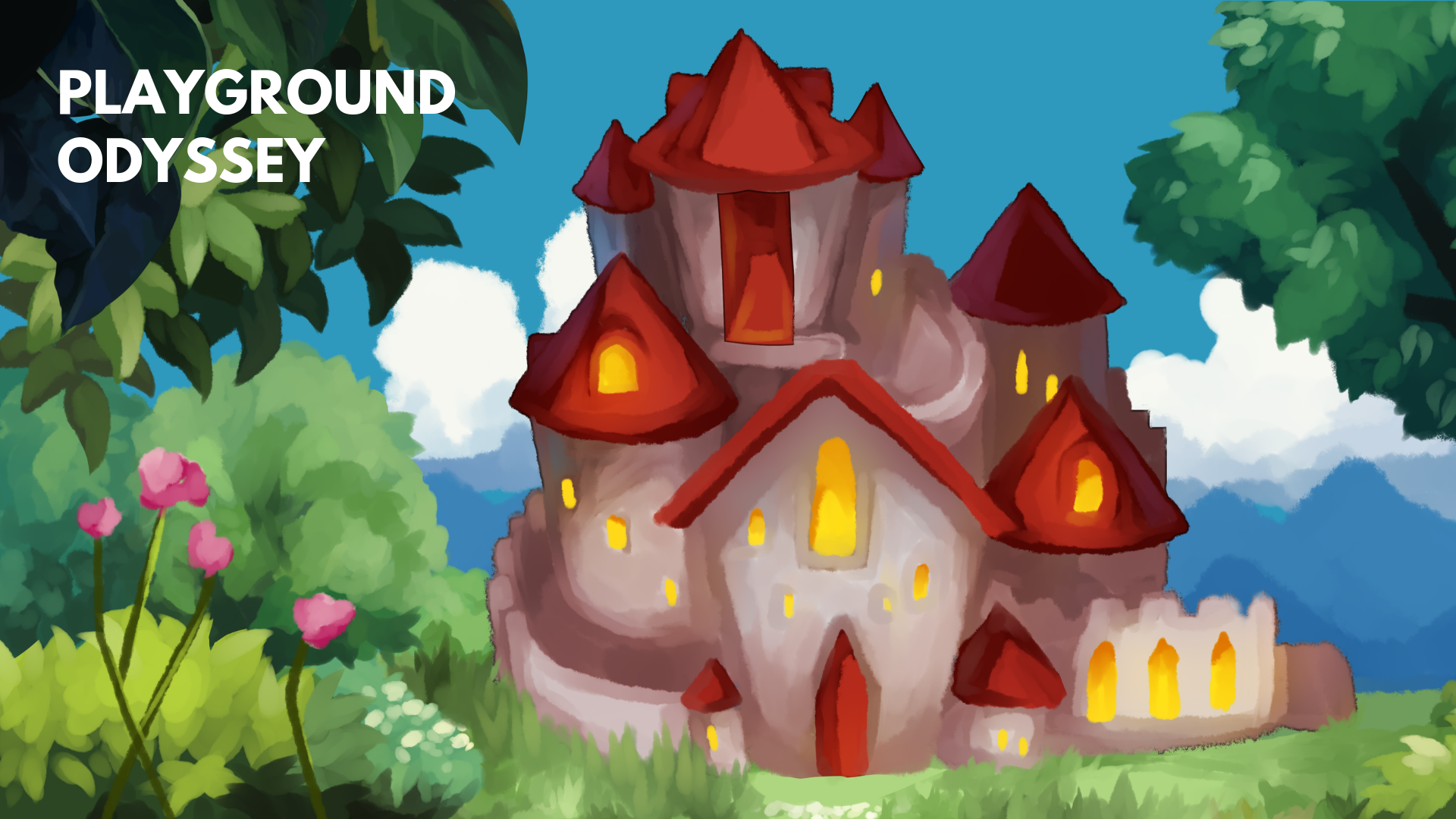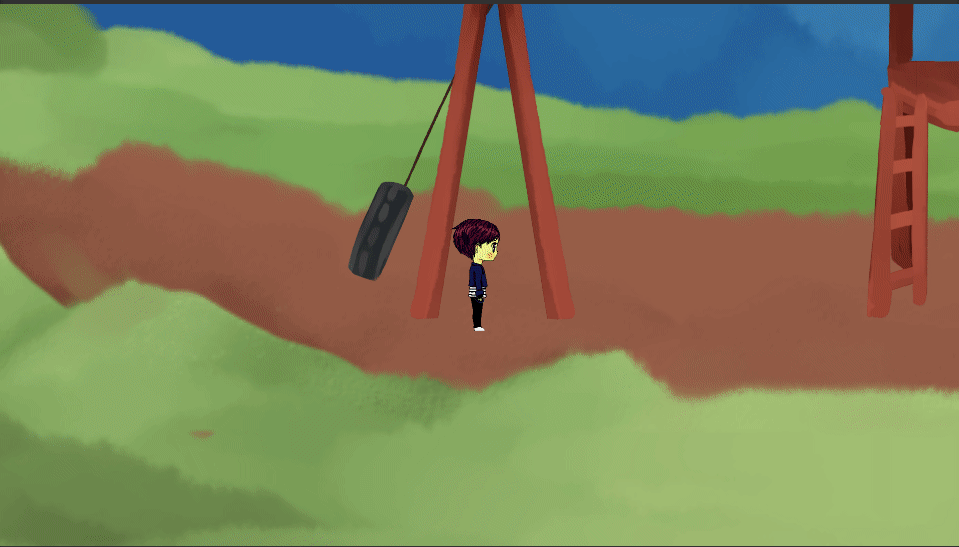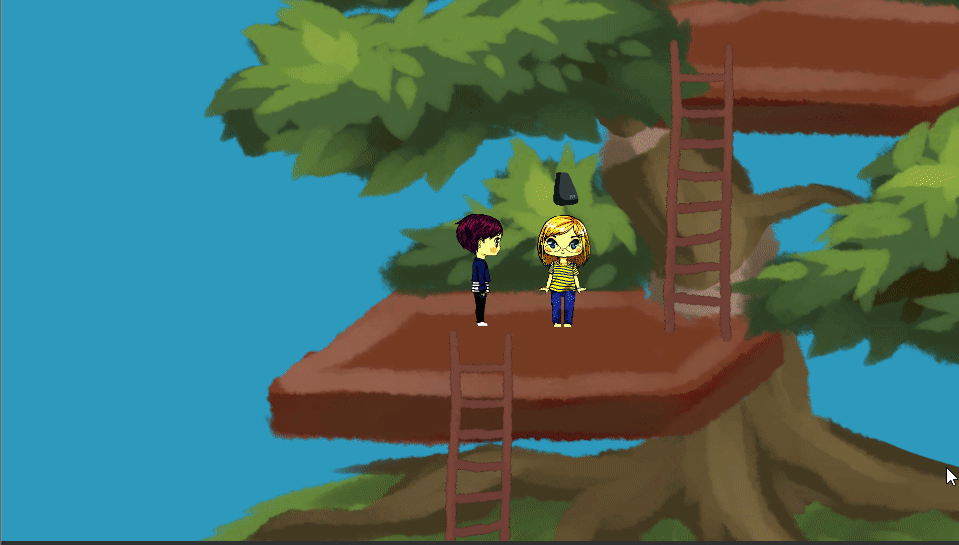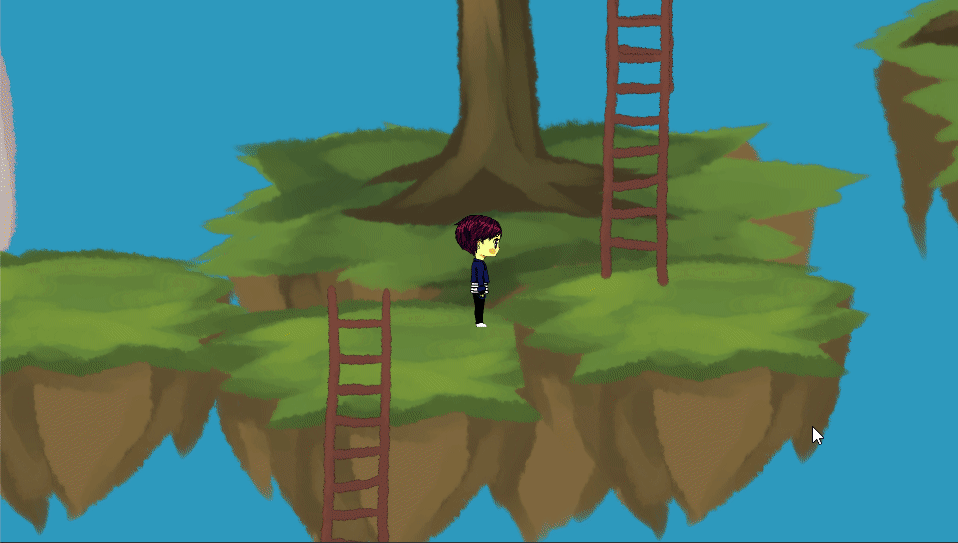PLAYGROUND ODYSSEY

ABOUT
A 2D platforming adventure game made for the 2019 Global Game Jam, at the WolverineSoft host site. The game is meant to
represent the beautiful relationship between recess and a child's imagination. To us, home meant reminiscing between
on exploring the worlds we created with our childhood friend. Simply interact with each character in the game to explore
their made-up story. Watch a humble little playground transform into completely different things!
DEVELOPMENT INFO
-
Developed by Seyhyun Yang, Amber Renton, Jason Debel, Loren Heubert-Aubry, and Dillan Huang
-
48 hour development cycle (January 2019)
-
5 developers
-
Made using Unity Engine
CONTRIBUTIONS
CONTRIBUTIONS
My major contribution to this project was the implementation and design of each of the playground mechanics. The monkey bars, ladder, and climable walls were all
fairly easy to implement, with the player's x or y-position being locked while they are being used. The swings were a bit more difficult to implement.
Many different methods were tried, such as manually calculating the relative transform of the player in a unit circle around the swing, or temporarily
setting the player as a child of the swing. None of these worked particularly well, and what I ended up doing was using the FixedJoint2D component. This
allowed me to fix the player to the end of the swing, and by setting the break force to infinity, the player could swing back and forth without breaking
free. The component could simply be set to inactive when the player gets off of the swing. There were several other mechanics that I designed, such as a
jungle gym, or a flight mechanic, there was not enough time to implement them.



